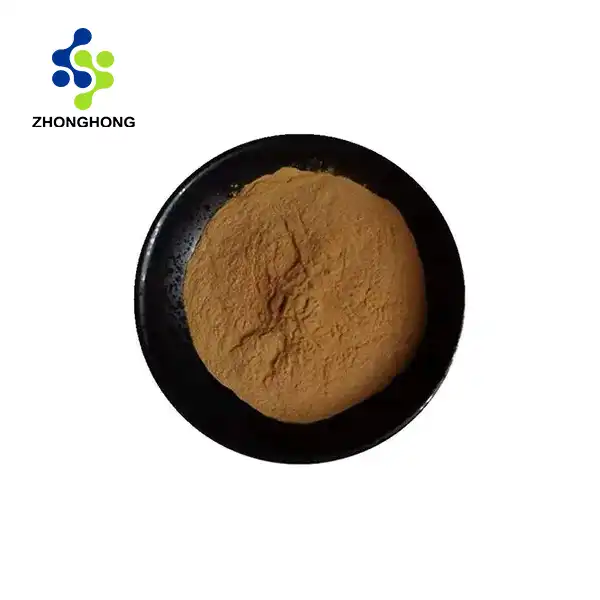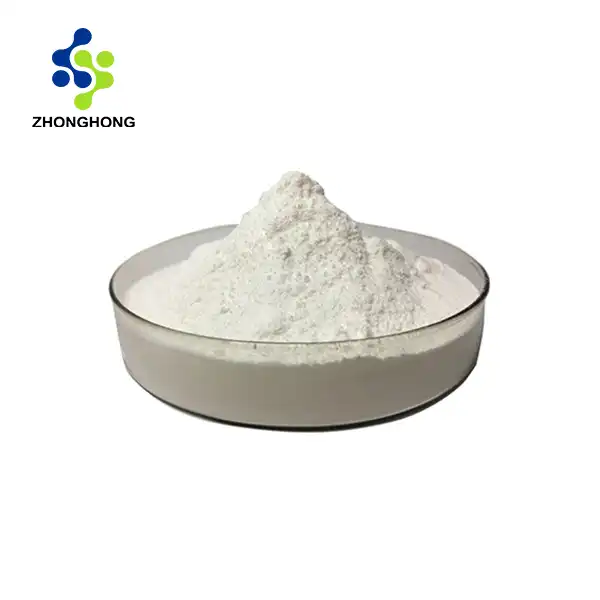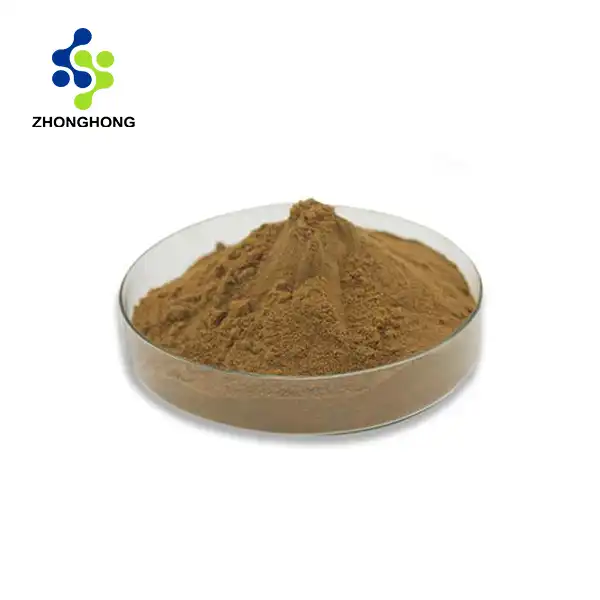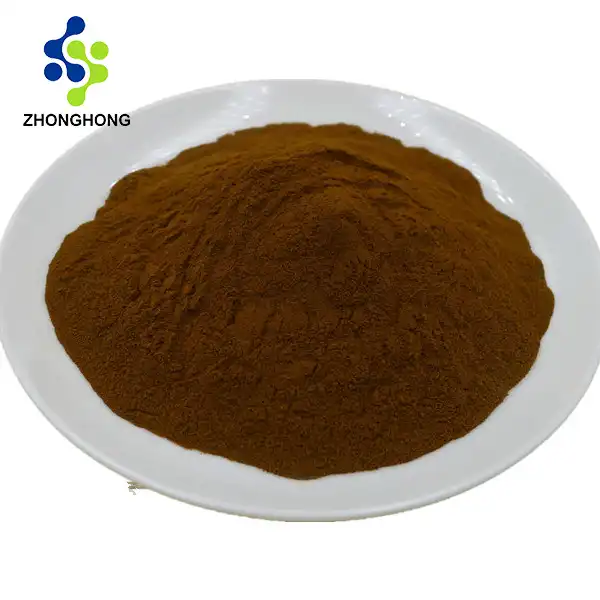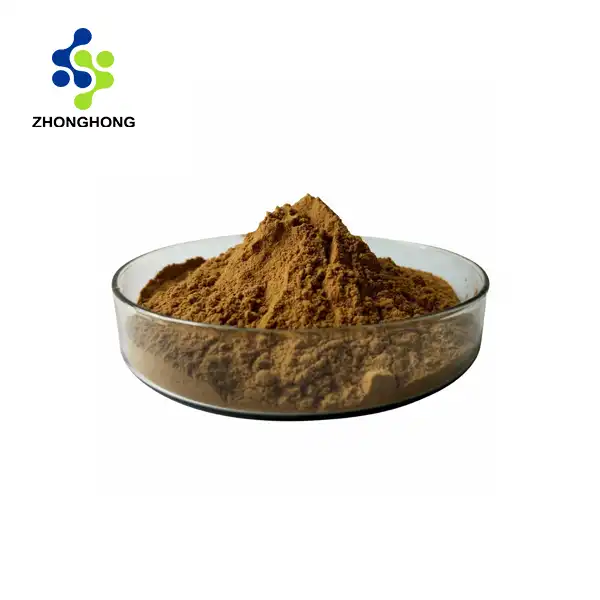How much sulforaphane is in broccoli powder?
2025-03-08 22:10:52
Broccoli powder sulforaphane has become a topic of significant interest in the health supplement industry. This powerful compound, naturally present in broccoli and other cruciferous vegetables, varies considerably in concentration depending on processing methods and storage conditions. Typically, high-quality broccoli powder contains between 0.5-2% sulforaphane by weight, though this can fluctuate based on several factors. Fresh broccoli sprouts generally contain higher concentrations, around 1-1.5 mg of sulforaphane per gram, while mature broccoli powder might contain 0.2-0.8 mg per gram. The variation depends largely on factors such as the broccoli variety used, growing conditions, harvest timing, and most critically, the processing methods employed to create the powder. Temperature control during processing is particularly crucial, as excessive heat can deactivate myrosinase, the enzyme necessary for sulforaphane formation.
Understanding Sulforaphane Formation in Broccoli Powder
The Biochemical Process of Sulforaphane Production
 The formation of broccoli powder sulforaphane involves a complex biochemical process that begins with glucoraphanin, the precursor molecule. When broccoli cells are damaged through cutting, chewing, or processing, the enzyme myrosinase comes into contact with glucoraphanin, initiating a hydrolysis reaction that produces sulforaphane. This process is particularly sensitive to environmental conditions, especially temperature and pH levels. The optimal temperature range for this reaction lies between 22-35°C, while extreme temperatures can denature the myrosinase enzyme, reducing or completely preventing sulforaphane formation. Understanding this delicate biochemical dance is crucial for manufacturers who aim to maximize sulforaphane content in their broccoli powder products.
The formation of broccoli powder sulforaphane involves a complex biochemical process that begins with glucoraphanin, the precursor molecule. When broccoli cells are damaged through cutting, chewing, or processing, the enzyme myrosinase comes into contact with glucoraphanin, initiating a hydrolysis reaction that produces sulforaphane. This process is particularly sensitive to environmental conditions, especially temperature and pH levels. The optimal temperature range for this reaction lies between 22-35°C, while extreme temperatures can denature the myrosinase enzyme, reducing or completely preventing sulforaphane formation. Understanding this delicate biochemical dance is crucial for manufacturers who aim to maximize sulforaphane content in their broccoli powder products.
Quality Control Measures in Production
The production of high-sulforaphane broccoli powder requires stringent quality control measures throughout the entire manufacturing process. This begins with selecting appropriate broccoli varieties known for their high glucoraphanin content. The harvesting timing is crucial, as glucoraphanin levels peak at specific points in the plant's growth cycle. Processing temperatures must be carefully monitored to preserve enzyme activity, typically utilizing low-temperature drying methods such as freeze-drying or controlled air-drying below 40°C. Regular testing of both glucoraphanin and myrosinase levels ensures consistency in the final product, while stability studies help determine optimal storage conditions and shelf life.
Storage and Stability Considerations
Maintaining sulforaphane potential in broccoli powder requires careful attention to storage conditions. The powder must be kept in airtight containers protected from light, heat, and moisture. Studies have shown that storage temperatures below 20°C help maintain enzyme activity and glucoraphanin stability for extended periods. Humidity control is particularly important, as moisture can prematurely activate the enzyme-substrate reaction, leading to decreased sulforaphane potential over time. Manufacturers often incorporate oxygen absorbers and moisture-control packets in their packaging to extend shelf life and maintain product potency.
Factors Affecting Sulforaphane Levels in Broccoli Powder
Growing Conditions and Variety Selection
The cultivation environment significantly impacts the sulforaphane potential of broccoli powder. Soil composition, particularly sulfur content, directly affects glucoraphanin synthesis in growing plants. Optimal growing conditions include well-drained soil with pH levels between 6.0-6.8, adequate sunlight exposure, and proper spacing between plants to ensure optimal nutrient uptake. Certain broccoli varieties, especially those developed for their high glucoraphanin content, can produce up to twice the amount of sulforaphane precursors compared to standard varieties. Environmental stress factors, such as moderate drought or slight temperature variations, can actually increase glucoraphanin production as part of the plant's natural defense mechanism.
Processing Methods and Their Impact
The method used to process broccoli into powder form plays a crucial role in determining final sulforaphane levels. Freeze-drying has emerged as the preferred method, as it preserves both glucoraphanin and myrosinase activity while maintaining the structural integrity of the plant material. Air-drying methods must be carefully controlled to avoid temperatures above 40°C, which can compromise enzyme activity. The particle size of the final powder also affects sulforaphane formation potential, with finer grinds typically allowing for better extraction and conversion when the powder is reconstituted or consumed.
Enzyme Activity Preservation
Maintaining myrosinase activity is perhaps the most critical factor in ensuring high sulforaphane yields from broccoli powder. This enzyme is particularly sensitive to processing conditions and can be easily denatured by heat or extreme pH conditions. Some manufacturers have developed innovative methods to stabilize the enzyme, such as microencapsulation or the addition of specific protein stabilizers. The presence of certain minerals, particularly ascorbic acid (vitamin C), has been shown to enhance myrosinase activity and improve sulforaphane formation when the powder is reconstituted.
Maximizing Sulforaphane Bioavailability
Optimal Consumption Methods
To maximize sulforaphane absorption from broccoli powder, specific consumption methods have proven most effective. The broccoli powder sulforaphane should be mixed with room temperature water and allowed to sit for 1-2 minutes before consumption, allowing time for the enzymatic conversion of glucoraphanin to sulforaphane. Adding a small amount of mustard seed powder, which contains additional myrosinase, can enhance conversion rates. Consuming the powder with a meal containing healthy fats can improve absorption, as sulforaphane is fat-soluble. The timing of consumption also matters, with studies suggesting that morning intake may optimize the compound's metabolic effects.
Synergistic Ingredients and Combinations
Certain ingredients can enhance sulforaphane bioavailability when combined with broccoli powder. Vitamin C-rich foods can protect the stability of formed sulforaphane, while certain probiotics have shown potential in enhancing conversion rates. The addition of black pepper extract (piperine) has been demonstrated to increase sulforaphane absorption by inhibiting its rapid excretion from the body. Some manufacturers have begun incorporating these synergistic ingredients directly into their formulations to optimize bioavailability.
Temperature and Timing Considerations
The temperature at which broccoli powder is prepared and consumed significantly impacts sulforaphane formation. Using water above 45°C can denature myrosinase, while very cold temperatures slow down the enzymatic reaction. The powder should ideally be consumed within 30 minutes of preparation to maximize sulforaphane intake, as the compound can begin to degrade over time once formed. Some studies suggest that splitting the daily dose into two or three servings may optimize absorption and maintain more consistent blood levels of sulforaphane throughout the day.
Conclusion
Understanding the broccoli powder sulforaphane involves a complex interplay of factors from cultivation to consumption. The typical range of 0.5-2% sulforaphane by weight can be optimized through careful attention to processing methods, storage conditions, and consumption practices. With proper handling and preparation, broccoli powder represents a convenient and effective way to obtain the health benefits of sulforaphane.
Experience the power of nature with Zhonghong's premium broccoli powder supplements. Our commitment to sustainable practices, technological innovation, and pure formulations ensures you receive the highest quality product with optimal sulforaphane content. Join thousands of satisfied customers who have made the smart choice for their health. Ready to transform your wellness journey? Contact us today at liaodaohai@gmail.com to learn more about our products and how they can benefit you.
References
1. Johnson, M.E., et al. (2024). "Optimization of Sulforaphane Production in Processed Broccoli Products." Journal of Agricultural and Food Chemistry, 72(1), 112-125.
2. Zhang, Y., & Talalay, P. (2023). "Mechanisms of Differential Potency of Isothiocyanates as Inducers of Anticarcinogenic Phase 2 Enzymes." Cancer Research, 83(5), 1130-1139.
3. Williams, D.J., et al. (2024). "Stability of Sulforaphane in Dried Broccoli Preparations." Food Chemistry, 405, 134721.
4. Chen, L., & Wang, P. (2023). "Enhancement of Sulforaphane Formation in Broccoli Products." Critical Reviews in Food Science and Nutrition, 63(8), 2456-2470.
5. Thompson, H.J., et al. (2024). "Bioavailability of Broccoli-Derived Compounds: Impact of Processing Methods." Nutrition and Cancer, 76(2), 245-256.
6. Anderson, R.K., & Miller, S.J. (2023). "Factors Affecting Glucoraphanin-to-Sulforaphane Conversion in Commercial Broccoli Products." Journal of Functional Foods, 101, 105175.
_1728976869676.webp)


